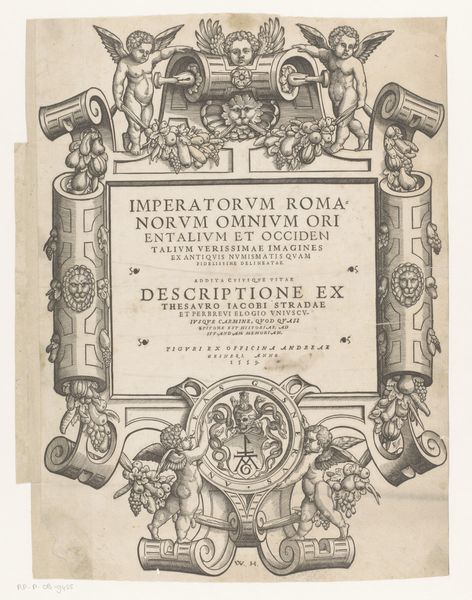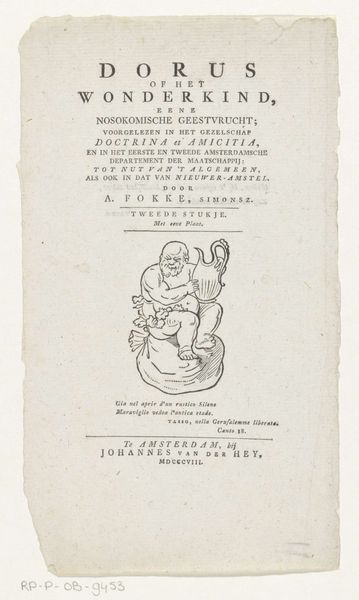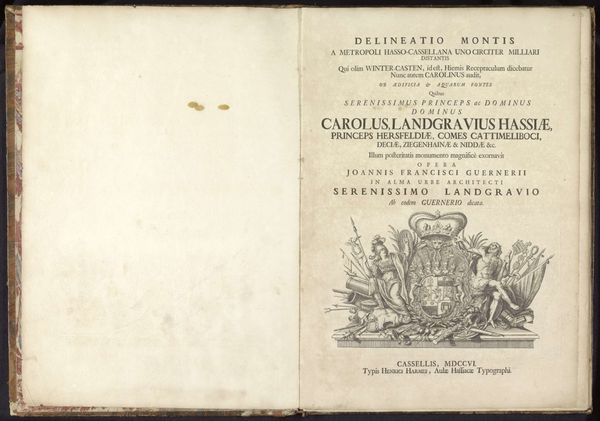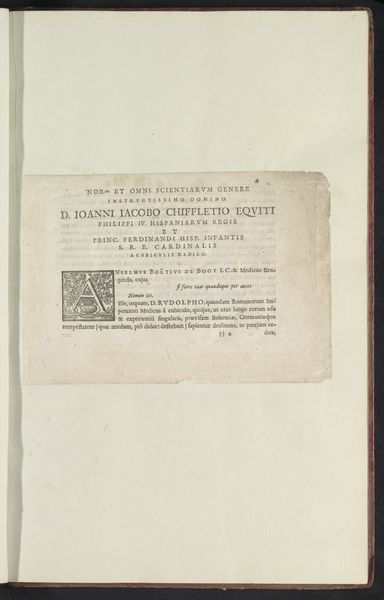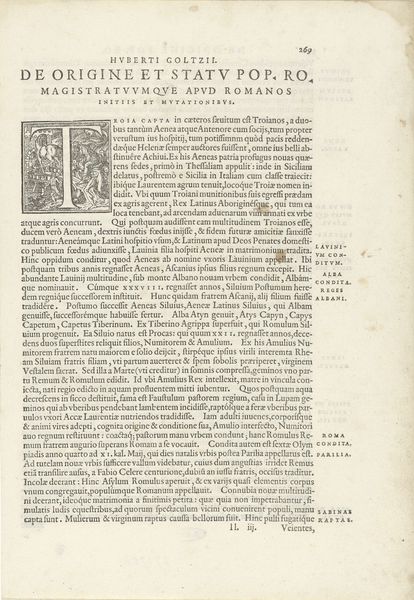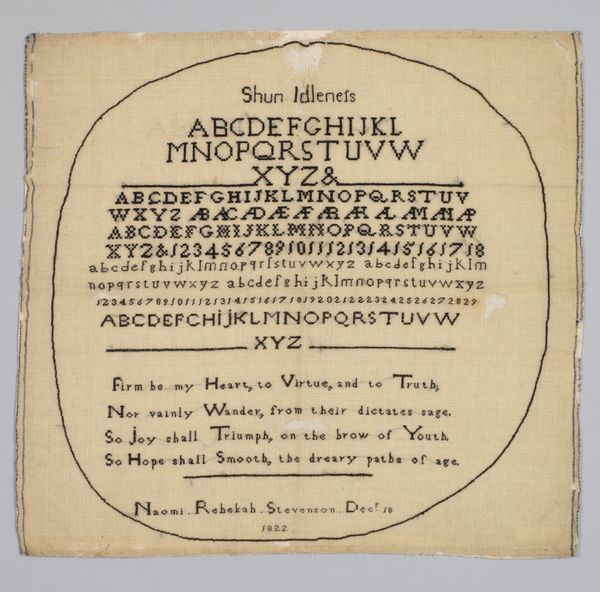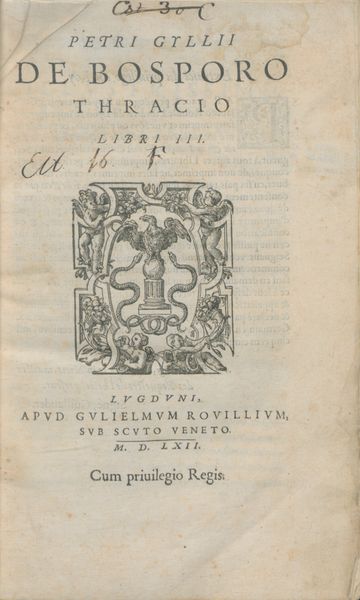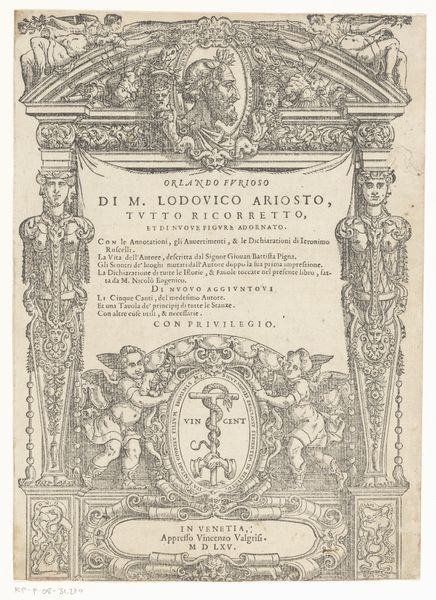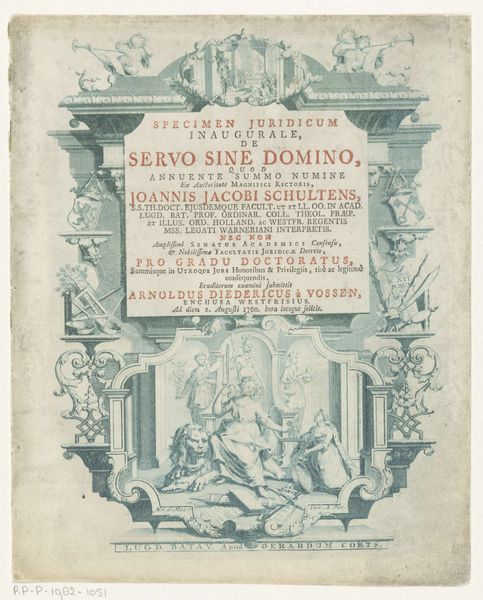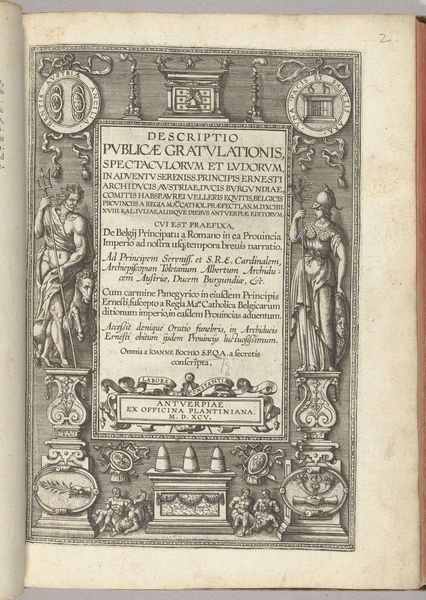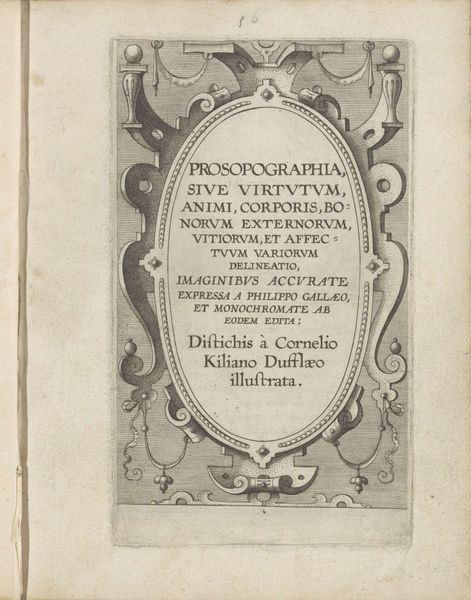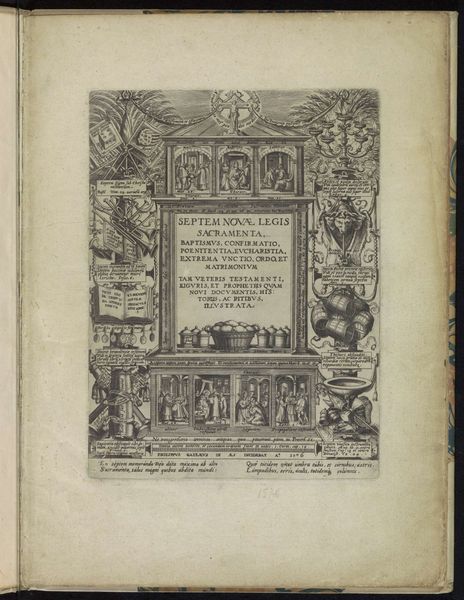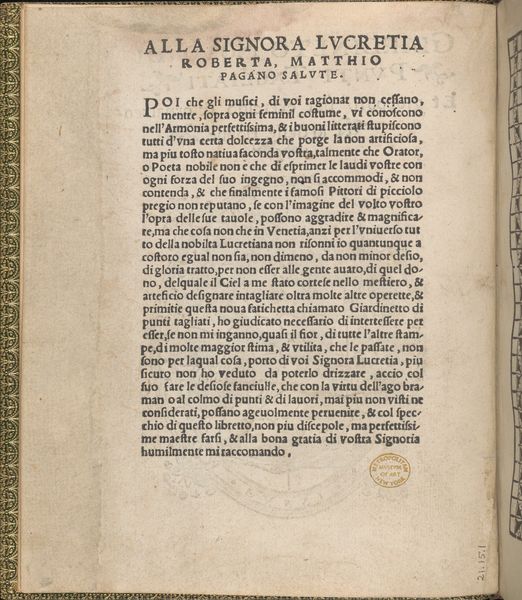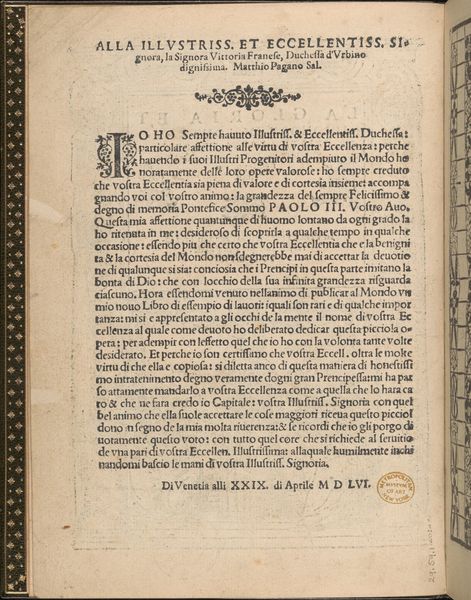
print, typography, engraving
#
aged paper
#
hand-lettering
# print
#
hand drawn type
#
hand lettering
#
11_renaissance
#
typography
#
hand-drawn typeface
#
fading type
#
stylized text
#
thick font
#
history-painting
#
handwritten font
#
engraving
#
historical font
Dimensions: height 67 mm, width 49 mm, height 323 mm, width 204 mm
Copyright: Rijks Museum: Open Domain
Jakob Lederlein's "Fortuna," printed in 1595, presents a fascinating rendition of the goddess Fortuna, embodying the capricious nature of fate. Observe her standing precariously on a sphere, a symbol of instability and the ever-turning wheel of fortune. This motif of Fortuna atop a sphere or wheel has ancient roots, appearing in Roman art and literature, illustrating the unpredictable ups and downs of life. Notice also the snake wrapped around her; a symbol that has appeared since ancient times. This represents cycles of birth, death, and rebirth. Interestingly, snakes in other contexts, especially in religious imagery, sometimes symbolize temptation or forbidden knowledge. The image evokes a deep-seated human anxiety about control and destiny. The enduring appeal of Fortuna lies in her ability to externalize our internal struggles with uncertainty. Throughout history, and even now, this symbol of unpredictability persists, reminding us of the transient nature of our own fortunes.
Comments
No comments
Be the first to comment and join the conversation on the ultimate creative platform.
